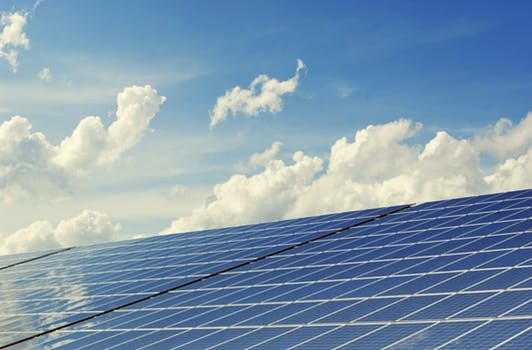Don't wanna be here? Send us removal request.
Text
Solar Panel over Canals in India

As far as the eye could see, line after line of solar panels extend out in the noontime sun oppressing on the village of Chandrasan here in the eastern Gujarat area of Mehsana, which presses in 80 even more people each sq kilometres than India's currently crowded standard of 441 individuals each sq kilometres.
But there is no land dispute involved with the Chandrasan installment due to the fact that the photovoltaic panels unfurl over a 750 m length of a watering canal.
The canal-top photovoltaic panels were set up in India's sunniest state in 2012 and now use expect a country three times as largely occupied as China, at once when India intends for virtually a nine-fold increase in solar ability between 2017 and also 2022 to meet global climate-change dedications and lower its reliance on coal-fired nuclear power plant.
The canal-top suggestion wased initially tabled at a 2011 Vibrant Gujarat Summit by the then Chief Minister of Gujarat, Narendra Modi, stated Bela Jani, a spokesperson at state-owned Gujarat State Electricity Corporation Limited (GSECL). The goal was to utilise the area over the canals, conserving the government the time, price and also inconvenience associated with land acquisition.
Gujarat alone has a canal network of 80,000 km. Making use of even 30 percent of this network for canal-top solar tasks, inning accordance with GSECL estimates, 18,000 MW of power might be created in simply Gujarat-- nearly equal to the existing coal-based installed capability of Delhi, Rajasthan and Telangana-- and 90,000 acres of land, or twice the size of Kolkata, can be saved.
Simply puts, setting up solar-panels over 30 percent of Gujarat's canals can be utilized to fulfill nearly a fifth of India's solar energy targets by 2022.
Presently, regarding 100 MW of solar installments atop and also besides canals are either authorized or unfinished in eight Indian states. Government subsidies are restricted to public-sector firms that possess canals or canal financial institutions, yet, if effective, private-sector involvement is unpreventable.
India's Solar Future
Coal generates over 75 percent of India's electrical energy and is amongst the cheapest energy sources offered, IndiaSpend reported in May 2015.
With over 300 million Indians without reliable power, and industrial need expanding, the demand for coal-fired electrical energy is approximated to enhance 3 times by 2030, with consequent ecological influences.
The real potential in a warm country to replace nonrenewable fuel sources is solar: India has a renewable-energy capacity of about 895 GW, which 750 GW is solar, as IndiaSpend reported in February 2015.
By 2022, solar energy can achieve grid-parity in India, implying it would set you back the exact same as various other resources of power-- although some records recommend this may occur by 2018. That is the year, as another IndiaSpend report claimed, renewable-energy market, largely solar, could create 1 million tasks-- over 4,00,000 already exist, inning accordance with a 2016 standing report by Renewable Energy Policy Network for the 21st Century, a global, multi-stakeholder network based from Paris.
Solar power plants can be constructed faster than either coal, gas or nuclear power plants.
Why Solar is essential For India's Climate-Change Commitments
By 2030, international greenhouse-gas exhausts are expected to get to 54-56 giga-tonnes of CO2 equivalent (GtCO2eq)-- far surpassing the level of 42 called for to restrict worldwide warming up to 2 ℃ by the year 2100, inning accordance with information from the Emissions Gap Report 2016, assembled by the United Nations Environment Programme yearly.
As component of its Intended Nationally Determined Contribution, India has devoted to resource 40 percent of its power from non-fossil fuel resources by 2030. By October 2016, sustainable installations totaled up to almost 15 percent of the installed energy ability, inning accordance with the Central Electricity Authority.
India currently deals with the challenge of including near 91 GW of solar-power capability over the following six years to reach its target of 100 GW of solar power by 2022.
0 notes